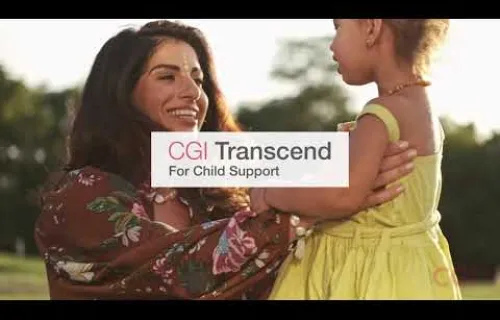The need to transform child welfare practice is more pressing than ever before. To support this need, the Administration for Children and Families (ACF) introduced regulations for a Comprehensive Child Welfare Information System (CCWIS) to support child welfare professionals and reimagine how we think about modernizing child welfare case management systems and information management. In a recent white paper, we take an in-depth look into child welfare information systems. In this blog, we'll take an even deeper dive into the benefits of CCWIS adoption.
Revolutionizing child welfare practice through CCWIS
CCWIS is not intended to be a technology refresh. It represents a paradigm shift in how child welfare agencies approach data quality and management, interoperability and information sharing, and, most importantly, service delivery. CCWIS is built upon a vision to revolutionize how child welfare professionals access, document, and leverage vital information, ultimately enhancing the quality of care and support provided to vulnerable children and families.
A key advantage of CCWIS is its ability to facilitate real-time data sharing and collaboration among child welfare professionals, foster families, service providers, and the stakeholder ecosystem. By breaking down barriers to quality engagement, CCWIS empowers child welfare professionals to make informed decisions, identify real-time patterns and trends, and quickly respond to emerging situations. This not only enhances the present safety and well-being of children in their care but contributes to positive outcomes in the long term.
Further, CCWIS recognizes the importance of data-driven decision-making in child welfare. By leveraging advanced analytics and reporting capabilities, agencies can gain valuable insights into their operations, case management processes, and service delivery outcomes. This allows agencies to identify areas for improvement, allocate resources more effectively, and be agile, continually refining their practices to better serve children and families' needs.
Navigating the challenges and opportunities of CCWIS implementation
The Family First Prevention Services Act (FFPSA) represents a seismic shift in the mission and culture of child welfare agencies nationwide. Rather than the traditional reactive approach of removing children from households after abuse or neglect has occurred, the act compels agencies to be proactive in preventing such situations from arising in the first place. This monumental policy pivot requires unprecedented multi-disciplinary collaboration.
Child welfare professionals must now collaborate with community organizations to provide comprehensive preventative services to keep families united and stable. The new mandate is to deliver meaningful, concrete support, from access to mental health treatment and substance abuse programs to affordable housing assistance and parenting skills training. This holistic, community-driven approach is designed to keep more families intact and empower them to thrive. Child welfare agencies demand an inspiring cultural transformation toward prevention over intervention.
Building a future-ready system for child welfare
Building a system today to respond to known and unknown future needs is essential to maximizing technology investments. Child welfare agencies often face unique challenges and evolving regulations, requiring their information systems to be flexible and responsive. CCWIS is designed to promote the development of modular and scalable solutions that adapt to changing environments and requirements, ensuring agencies remain compliant and equipped to meet the ever-changing demands of child welfare.
The holistic vision of the CCWIS: beyond technology
The vision of CCWIS extends beyond technology alone; it encompasses a holistic approach to service delivery and agency operations. By promoting collaborative partnerships, streamlined processes, and a culture of continuous improvement, CCWIS can help child welfare agencies achieve greater efficiency, accountability, transparency, and better outcomes in their efforts to protect and support children and families.
Adopting CCWIS: transforming child welfare for the better
As the adoption of CCWIS gains momentum across the nation, child welfare agencies need to embrace this transformative opportunity. By investing in modern, configuration-first, purpose-built information systems, agencies can begin to unlock the full potential of their data, enhance collaboration, and deliver more effective and efficient services to those in need.
However, it is essential to note that the journey toward CCWIS implementation has challenges. It requires a significant commitment of resources, stakeholder buy-in, and a willingness to adapt to new processes and working methods. Effective business process streamlining, change management strategies, comprehensive training, and ongoing support are crucial to ensuring a smooth transition and realizing the full benefits of CCWIS.
As we look toward the future of child welfare, CCWIS represents a beacon of hope and progress that expands far beyond information technology projects and child welfare programs alone. Additionally, while the focus of CCWIS is understandably on replacing legacy systems, we must do so with the intention of not just replacing existing solutions but designing next-generation solutions that support modern systems of care.
With thoughtful planning, CCWIS can be the driving force that shifts us toward innovative service delivery in child welfare. By harnessing the power of technology, data-driven decision-making, and collaborative partnerships, child welfare agencies can create a more efficient, responsive, and compassionate system focused on a culture of continuous improvement and the well-being of children and families. It is a vision worth embracing, holding the promise of transforming the lives of those who depend on the services provided by child welfare agencies.
This is the first of a five-blog series exploring the benefits of rethinking how we manage child welfare information systems. Check back soon for the next installment in our series, "It's all about the people," where we will dive deeper into the opportunity CCWIS brings to impact the human experience.
Ready to learn more about CGI's innovative services and solutions designed uniquely to deliver child welfare programs? Connect with an expert today.





